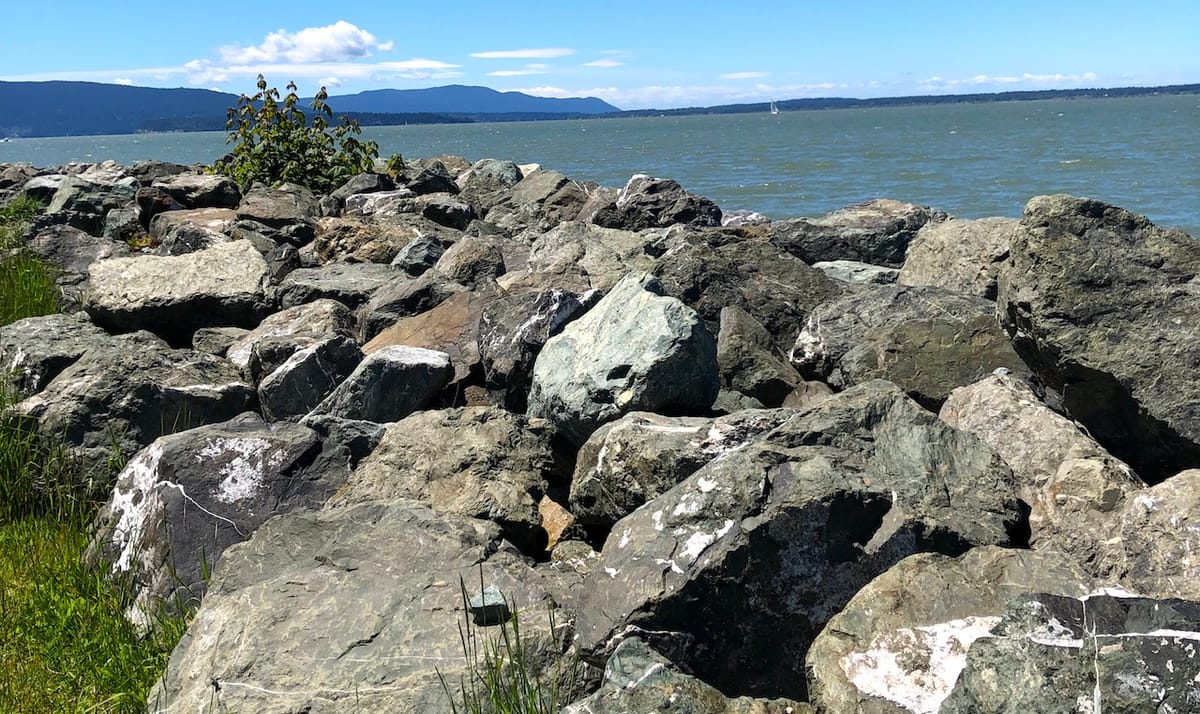who is america for?

There are no safe harbors. Week after week, day after day, we feel the erosion of our rights and liberties. The protections many of us have long enjoyed are going away. The people who lead our institutions chose to preserve them and themselves over us. We suffer, as so many have, and continue to have, in the land of the free. Nobody can say to the fascism that creeps up like muck, “it’ll never happen here.” Right now it feels like only a matter of time.
I encourage us all to acknowledge that erosion and prepare to push against it. We must not stall it, we must reverse it. We need to get down into the muck beneath our feet and see the people who have always been threatened by it. Even from where we are, many of us still have advantages that will get us out sooner. What we need right now is for more people to admit that the muck is unacceptable. Not just for themselves, but for anyone. We cannot stand to hear another time that the people who got out, got out on their own. I won’t accept anyone who says that if they did it, so can everyone else.
Who is america for? Who does it belong to? We should have a lengthy discussion about what it means to own the land under our feet. Property, the original NFT, may not belong in a land that once did not have owners. Right-wing media will claim that white men built america, and they built it for themselves. This tension exists throughout our history. We are living out the professed values and ideals of a white supremacist patriarchy. But it didn’t have to be this way. Throughout american history we see repeated moments, such as the failures of the first and second Reconstruction, when it almost stopped being this way. Each time, racists and moderates pushed back against the changes we truly needed. That’s in the past now. We still have time to fix it today. We can still take it back.
create our own ways
We are not the first people to imagine resistance. There are many approaches people have taken throughout history to resist oppression. Nonviolent protest figures into a lot of our traditions, but violent protest is often critical for enacting change. People practiced malicious compliance however they could to resist or destabilize the state. Indigenous people and others deploy generative refusal: rejecting the system and building a new one.
This approach is so important to me. I do not believe the systems and institutions around us can do this alone. They can’t reject structural racism while existing in it. We need to create new organizations and institutions. We need to help create even newer ones alongside the generations to come. Start a company or a coalition. Partner with existing ones to transfer wealth and power to the communities around us. And do it again. We have a lot to rebuild.
assess your values
Kelly Hayes and Tanuja Jagernauth discuss values in a recent Movement Memos podcast. Jagernauth describes conducting a values assessment for herself every now and then. It isn’t a complicated practice. She says to “check-in with yourself and lovingly ask, are my actions in alignment with my values right now? If so, how? If not, how?” Though she adapted this practice for herself, organizations could do this just as easily with staff across the hierarchy. How often do we live out our stated values? If we don’t, when do we not? Why? Why and when do we feel comfortable suspending or disregarding our values?
It isn’t enough to hold values, we have to live them out. Do we believe that Black lives matter in a society that has long discarded and devalued those lives? Then we must do something about it. Do we believe that people who are trans are the gender they say they are? Then we can’t accept anyone in power who dictates otherwise. I’m not writing about global issues right now. I’m referring to the people we interact with on a daily basis. I’m describing the people you may feel uncomfortable around when they express their opinions. Who do they have power over? Who is a subject in their small fiefdom? Change that dynamic. We can’t afford to hedge anymore.
hold onto hope
In the same podcast episode, Jagernauth quotes Rebecca Solnit’s Hope in the Dark. Solnit writes, “Your opponents would love you to believe that it’s hopeless, that you have no power, that there’s no reason to act and that you can’t win.” Solnit continues, “Hope is a gift you don’t have to surrender, a power you don’t have to throw away. And though hope can be an act of defiance, defiance isn’t enough reason to hope. But there are good reasons.”
When it’s dark it’s so much easier to give up hope. It’s easy to fall into cynicism that things will never get better. I let cynicism define at least a decade of my life that I can’t get back. When that decade ended, I was still in the world that I had made. I was in a world that others made for me. But Solnit writes, “hope is not the belief that everything was, is or will be fine. […] [It’s about] specific possibilities, ones that invite or demand that we act.” We need hope, but we need action to make our hopes come true. One without the other is not enough.
decolonize it
More than anything, we need to honor our discomfort. We need to use it to reject all that’s wrong with the world around us. I’m still mulling over Poka Laenui’s words in Processes of Decolonization. Laenui writes about first recognizing colonization, then working to displace it. Laneui writes about his deepened understanding of u.s. colonialism in Hawaii. The process of violent colonization has happened elsewhere. It can decolonize in similar ways, too.
Laneui writes that decolonization is more than simply “diversifying” colonized power structures. Britain left power vacuums in many of its former colonies, including Sri Lanka. The people who replaced their leaders rarely destabilized the structures they left behind. In Sri Lanka, this created systems-level disparities between the Sinhalese and Tamil populations. These injustices led to a long and bloody civil war. Laneui writes that when we decolonize, we must reevaluate, “the political, social, economic and judicial structures themselves.”
resist, resist, resist
We live in a world where everything feels polarized, everything feels fractures. We don’t have to feel that way. We can invest ourselves into the communities around us. We can bridge with others who are not like us. We can give no quarter or platform to fascists and their attempted genocide. We can ask ourselves, “who is america for?” Who do we want it to be for? When and how will we fight harder for that?



